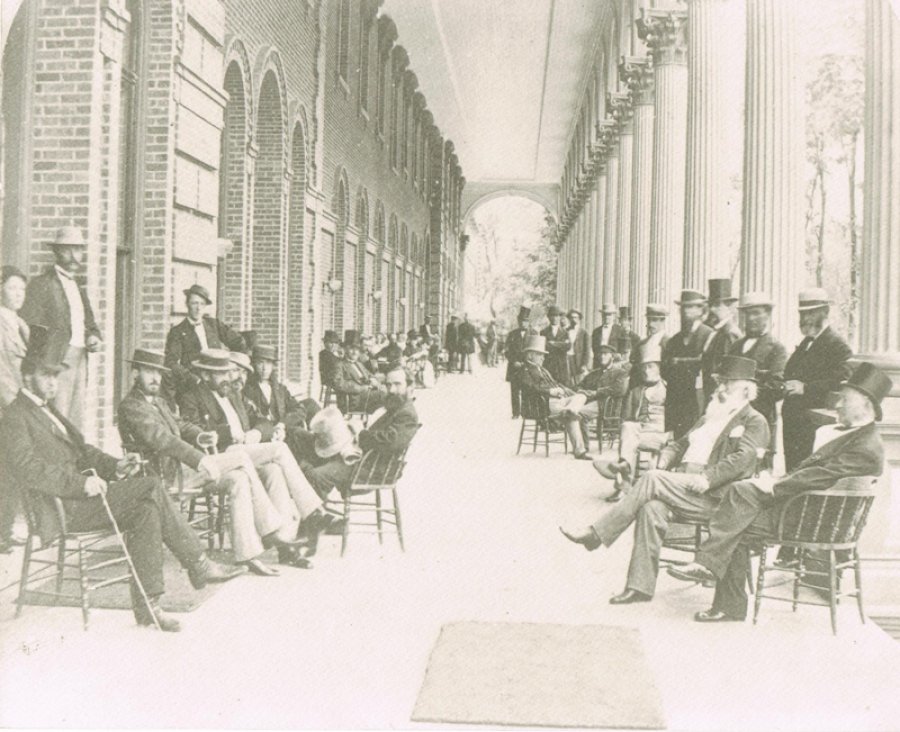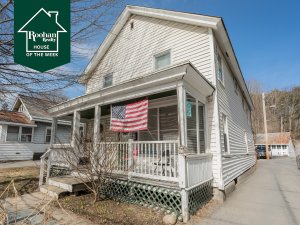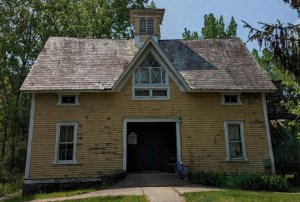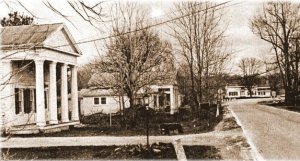Displaying items by tag: Congress Hall
History of Saratoga - Congress Hall: Putnam’s Vision
The grand hotels of Saratoga Springs, in the 19th century, were the most visible indication that our city was the number one tourist destination in the country. The hotels were huge in size, eloquent in style and known throughout the country as “the place” to be in the summer season. Gideon Putnam built the first hotel in the village in 1802 and it was then known as Putnam’s Tavern and Boarding House. This initial hotel had the capacity to house 70 guests. In 1802 Saratoga Springs was not in need of large hotels because it was a small fledgling destination but as our popularity grew, it didn’t take long before Putnam needed an “overflow” for his first hotel and began to plan and build a new hotel. The new hotel would be called Congress Hall. The Congress would be located on the eastside of Broadway, stretching from the south-east corner of Spring Street to East Congress Street (the entry to Congress Park today).
Gideon Putnam began construction of Congress Hall in 1811 with the name coming from the nearby famed Congress Spring that was a well-known asset in the early village. While working on the north façade of the hotel, Gideon fell from the scaffolding and was seriously injured. Putnam suffered for months from those internal injuries until he died on December 1, 1812. Congress Hall was three stories tall with 196 feet of frontage on Broadway and two wings that went down Spring Street and East Congress Street for a length of sixty feet. The front side of the hotel had 17 columns each thirty feet in height that framed a very beautiful porch that gave guests a place to sit and observe the activity on Broadway day and night. For this period in Saratoga history the Congress was a very large hotel that had a capacity to accommodate 150 guests. Early ownership of the hotel preferred to make this destination a house of temperance and religious activity.
In 1814 the hotel waspurchased by Grandus Van Schoonhoven who worked on the property until 1815 to further match the original plans set forth by Putnam. At this point in city history the Congress Hall was the largest hotel in Saratoga Springs until the United States Hotel was constructed and opened in 1824. Van Schoonhoven was joined in business by his nephew in 1822 and then again joined by others in 1823. In general, the hotel was leased to many different proprietors during the period from 1823-1855. In 1819 the village of Saratoga Springs was declared a special township with the right to self-govern. In that year the town decided to allow certain “pleasures” to be introduced in the village. In the summer of 1819 the Congress Hall introduced billiard rooms, an orchestra for concerts at night and allowed men to play cards in their rooms. These new additions made Congress Hall a desired location for dancing and other flirtation activities of the day. In 1822 Frank Johnson, a prominent band leader, came to provide the music for the dances called “Saratoga Hops” that would continue for years as a much-anticipated event of each season.
After midnight on May 30, 1866 the original Congress Hall burned in a very rapidly spreading fire that also destroyed the nearby Hamilton Spring and Bath House. The management had been working to prepare for the Congress Hall to open for the summer season of 1866 on June 1st. The original hotel was constructed of wood and was very susceptible to catching fire from the many open flame devices used in that time. Henry Hathorn was the owner at the time of the fire and began to immediately make plans to re-build. The new hotel would be constructed of brick and be much larger and grander than the original.
The new larger Congress Hall would be rebuilt in 1868 and would extend 416 feet down Broadway with two right angle wings, 300 feet in length with a rear courtyard in the middle. The entrance to the hotel revealed a lobby with a grand staircase and 16-foot-high ceilings on the first floor. The piazza on the Broadway side was 20 feet in width that would hold countless rocking chairs for guests to rock away the summer days while fueling the gossip of the day. As the new Congress Hall was planned and constructed it was evident that the hotel needed a large ballroom to compete with the other larger hotels in Saratoga Springs. Property that was not part of the original footprint of the hotel needed to be purchased to allow for the ballroom. The needed property would be found on the north side of the intersection of Broadway and Spring Street. The building that would house the ballroom still stands today but is composed of retail on the first floor and condo housing on the floors above. Henry Hathorn connected the hotel to the ballroom with a convenient iron pedestrian bridge, made in Troy NY, that passed over Spring Street. This passage-way allowed women to maintain clean silk shoes and hems of long dresses during inclement weather as they walked above an unpaved Spring Street. The metal bridge was further dressed up with the addition of carpeting, Chinese lanterns and an awning used during rainy weather.
During the summer of 1869 the Congress Hall hotel was prepared to host the first suffrage convention with Susan B. Anthony in attendance. By 1873 the new ballroom allowed the hotel to offer many great forms of entertainment during the summer season featuring Friday night balls with famous orchestras and performers. A travel guide in 1874 defined the Congress Hotel as the spot for American aristocracy to spend their Saratoga summers, that offered no barriers to the mixing of average people to high society. It has been noted by some travel guides, and a few historical accounts, that many felt that during this time that the village of Saratoga Springs taught the average American how to take a refined, civilized vacation. Undoubtedly, Congress Hall provided a location and an atmosphere for that education. As the years went on and the city approached the 1900’s, Congress Hall began to fall from favor with the vacation crowds and went into bankruptcy on May 9, 1904.
Between the summers of 1904 and 1911 many attempts to re-open and re-organize Congress Hall eventually failed. Congress Hall was closed forever and sold to the City of Saratoga Springs in 1911 with demolition to follow. The land on which the hotel stood was added to expand Congress Park and was just a foreshadowing of the eventual demolition that would take down the other two giant hotels, the Grand Union and United States. Vacation styles in America were changing and so would Saratoga Springs as it continued to re-invent itself to remain the “summer place to be.”
History of Saratoga - Famous Visitors to Saratoga
Interesting stories of famous visitors coming to Saratoga Springs are numerous and the list of notable individuals is long. These visitors truly helped Saratoga to become the number one summer tourist destination in the United States during most of the 1800’s.
I think each of us have a different view as to what makes a person a notable individual. Some would pick stars of the stage, others would be impressed with politicians, or writers, titans of industry, lawyers, famous orators or American Presidents. In this case there is no problem with which group to pick, since we had them all visit Saratoga Springs.
Starting with future President George Washington visiting the High Rock Spring in 1783 with General Phillip Schuyler we continued with visits from other Presidents like Buchanan, Grant, Fillmore, Tyler, Jackson, Arthur, Cleveland, Van Buren, Harrison, Pierce, J.Q. Adams, Garfield, Hayes and Roosevelt. They came for political reasons as well as for the high society of the day. Saratoga was a place to see and be seen.
We also entertained international guests like Napoleon the third, brother of Napoleon Bonaparte and former ruler of Spain and Naples for five summers in the 1820’s. Napoleon III spent his time on the property that today is known as Yaddo. In the 1820’s the property was owned by Jacobus Barhyte who operated a tavern and boarding house that featured renowned trout dinners with fish from the ponds on the property. Napoleon III loved the land so much he offered to buy the property for a large sum but was refused by Barhyte. The famous French hero of the American Revolution, the Marquis de Lafayette, was on a world tour in 1824 and made an extended stop in Saratoga that summer. We must have been a great summer destination if international guests like Napoleon and Lafayette made time to visit our city.
Many notable American politicians also came to our city for the purpose of attending the many political conventions that were held in the city or to give speeches when running for office. Henry Clay, John Calhoun, Daniel Webster and Aaron Burr all visited Saratoga.
The former Vice-President Aaron Burr had other connections to Saratoga beside just a casual summer visit. Burr in his later years was single and in need of funds since he was a poor manager of his finances. In 1832 he met Eliza Jumel who had great assets, having done a tremendous job of running her husband, Stephen Jumels’ wine importing business after his early death. The former Mrs. Jumel was a well-known figure in the social circles of Saratoga during the summer season. Eliza resided at her summer home on Circular Street, when not in her NYC home.
Eliza Jumel wanted the respect that marriage to a former Vice-President would give her and Burr was looking for financial stability, so they were married in 1833. A short time after their marriage, Burr had lost thousands of dollars of their money with poor investments. Eliza had made it clear that the practice needed to cease. After continued losses by Burr, Eliza decided to divorce him. In search of protection in the divorce proceedings she decided to retain a lawyer that would work to protect her assets. She looked for someone who would have a real desire to help her, so Eliza retained the legal services of Alexander Hamilton’s second son, Alexander Hamilton Jr. Since Burr killed Hamilton Sr. in a duel, she felt the choice was a good one. Later she served the elderly Burr with the divorce papers and the divorce was finalized in 1836, on the day Burr died.
The parade of famous visitors continued with the notable writers James Fenimore Cooper, Mark Twain, Harriet Beecher Stowe, Ralph Waldorf Emerson, Horace Greeley, and Washington Irving. Washington Irving was best man for the marriage of Saratoga’s, Mansfield Walworth to Ellen Hardin Walworth on July 29, 1852 at St. Peter’s Church in Saratoga Springs. Other people associated with the arts continued with musical composers John Phillip Sousa and Victor Herbert. Both served as conductors and music directors at large Saratoga hotels in the summer.
Victor Herbert was music director at the famed Grand Union Hotel for a few summers in the early 1900’s. His 60-piece orchestra provided musical entertainment to hotel guests by playing as many as three concerts a day. Herbert became good friends with Tom Winn who was head of hotel security. Every night after the evening concert Herbert chose to unwind by taking a walk around the courtyard of the grand hotel with Winn. On one warm summer night as they walked, they heard a muffled voice from the bushes say; “Kiss me” and a few seconds later the same voice said, “Kiss me again”. Both Herbert and Winn smiled at each other and walked away. Victor Herbert used this as inspiration to compose music for a song entitled “Kiss Me Again”. Henry Blossom wrote the lyrics and it became the cornerstone for the operetta entitled: “Mademoiselle Modeste”. The opera opened on Broadway December 25, 1905. Prior to the opening of the production Herbert sent Winn two front row tickets to the opening with a note that read; “You were at the conception, come see the birth”. Such was summer life in Saratoga Springs.
The list of famous guests also includes Civil War Generals Winfield Scott, William Tecumseh Sherman and Ulysses S. Grant. Even future Confederate General Stonewall Jackson stayed in Saratoga Springs on his honeymoon. Industrial giants W.C. Whitney and Commodore Vanderbilt were regulars to the city along with founders of the Saratoga Racetrack William Travers, Leonard Jerome and John Hunter who worked with John Morrissey to start racing horses in 1863.
This trend of famous visitors continues today with many notable people visiting SPAC, the Racetrack or just the city. We are very lucky to live in a city that we love so much and is appreciated by so many that visit even in the 21st century.




 How to resolve AdBlock issue?
How to resolve AdBlock issue? 


































